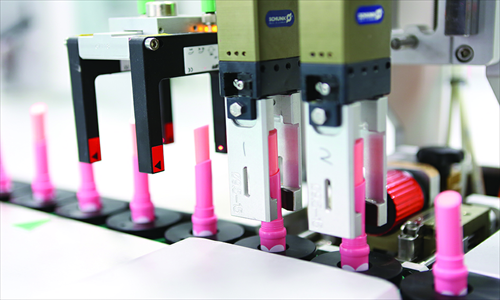
credits for the picture : http://metrouk2.files.wordpress.com/2013/03/1903-animal-testing-new.png
Carrying on with animal testing, this picture shows the numbers of people who agree and disagree to animal testing for cosmetics, what do you think? are you against it ? Many companies do not use animal testing and still are selling huge amounts of safe cosmetics and sometimes sell more as people agree that animal testing is bad.
Questions and answers about animal testing taken from this website: http://www.hsi.org/issues/becrueltyfree/facts/about_cosmetics_animal_testing.html show what companies are doing to stop animal testing and alternative ways to test make up. (more questions on the website)
Q: Do these animal tests have scientific limitations?
A: Yes, because different species can respond differently when exposed to the same chemicals. This means that results from animal tests may not be relevant to humans, under- or over-estimating hazards to people. Animal test results can also be quite variable and difficult to interpret. Unreliable and non-predictive animal tests mean consumer safety cannot be guaranteed.
Q: How can companies avoid animal testing?
A: More than 500 cosmetics companies—including LUSH, JASÖN and Kiss My Face—have sworn off animal testing, yet still produce new, safe and fabulous beauty products. They do so by choosing combinations of the thousands of existing cosmetic raw ingredients that have already been established as safe for human use, instead of purchasing newly developed chemicals that will also have been newly animal-tested. In addition, the safety of new product formulations made from these existing ingredients can be assured using available state-of-the-art non-animal tests. Find out more about cruelty-free companies.
Q: What are the alternatives to animal testing?
A: Advanced non-animal tests represent the very latest techniques that science has to offer, replacing outdated animal tests that have been around for many decades and haven’t stood the test of time. More than 40 non-animal tests have been validated for use, and these modern alternatives can offer results that are more relevant to people, often more cheaply and efficiently, too. For example, there are a number of skin tests available that use human reconstructed skin, such as EpiDerm, as well as the "3T3 NRU" test for sunlight-induced “phototoxicity,” and the Bovine Cornea Opacity and Permeability test for eye corrosion. Find out more.
Do you agree with everything been done? I don't think animal testing is correct however I don't believe products should be sold without being tested which could harm customers, this dilemma is being looked into seen in the above questions. do what you can to help prevent animal testing.. In the end what if you were that poor bunny rabbit with scars and rashes because you were the test dummy for a moisturizer that went wrong. Websites like WWF helps fight and protect animals against animal cruelty and testing.


